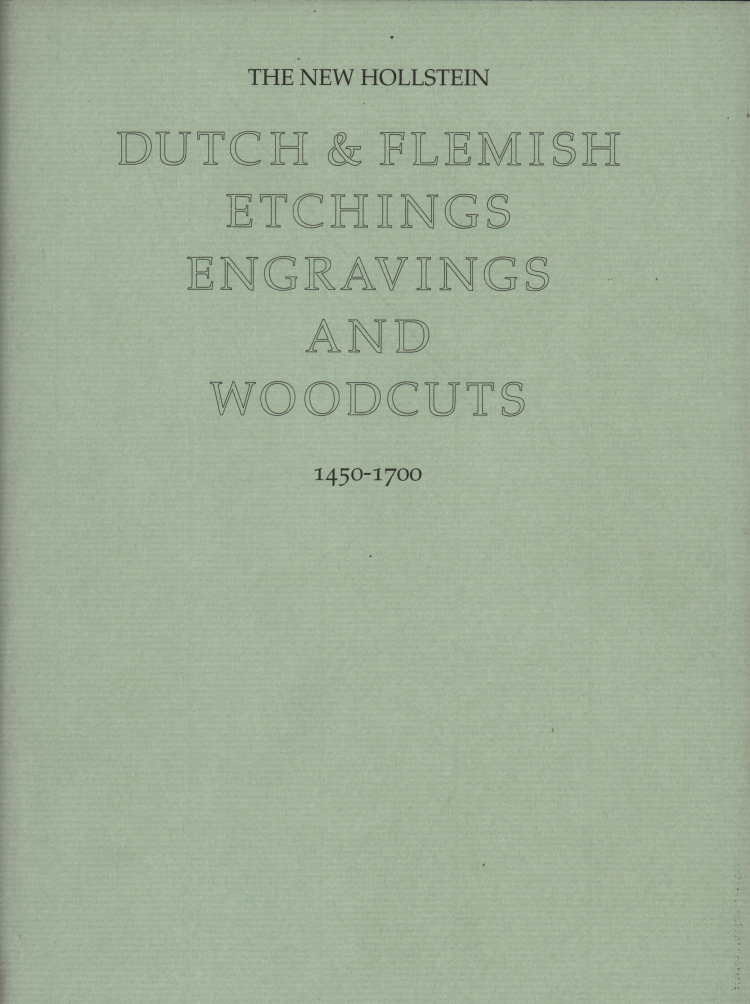








| Reference: | S0042 |
| Author | - The New Hollstein |







| Reference: | S0042 |
| Author | - The New Hollstein |
The Antwerp years, 1554-1575 – The years of refuge, 1576 c. 1583 – The northern netherlandish years 1583-1606/ compiled by Henk Nalis; edited by Ger Luijten, Christiaan Schuckman.
Physical description: 4 volumes, 1024 p. (135+282+282+325): ill.; 27 cm.
Publisher: Rotterdam, Sound & vision interactive, in co-operation with the Rijksprentenkabinet, Rijksmuseum Amsterdam, 1998.
Taken from the series: The new Hollstein Dutch & Flemish etchings, engravings and woodcuts: 1450-1700.
[ISBN] 9075607-261-296-253-288
This publication in the New Hollstein Dutch & Flemish etchings, engravings and woodcuts series, which consists of four volumes and a cd rom, is the first comprehensive and fully illustrated catalogue of all the prints and maps engraved or etched by members of the Van Doetecum family: Jan, Lucas, Baptista and Jan the Younger. The brothers Jan and Lucas left Deventer for Antwerp, where they worked for the great publishers Hieronymus Cock and Gerard de Jode. They etched landscapes after Pieter Bruegel the Elder and the so-called Master of the Small Landscapes, ornamental designs after Cornelis Floris and Hans Vredeman de Vries, maps for Cock, De Jode and Abraham Ortelius etc.
The Van Doetecum brothers had developed a special technique of etching, so closely resembling the quality of engraving that their prints have been frequently described as engravings. Contemporaries most valued their technique through which the Van Doetecums were able, with a minimum of effort, to imitate engraving and to produce a smooth gradation of tone. Until recent times art historians paid little attention to the brothers who were considered a reproduction engravers, but since the studies of Oberhuber, Mielke and Riggs they are considered to be original and important graphic artists. After the death of Lucas in the early eighties of the sixteenth century Jan returned to the northern Netherlands, where he then worked with his sons Jan the Younger and Baptista. Jan engraved important maps, such as the sea charts for Lucas Waghenaer's Spieghel and Thresoor der Zeevaert and the maps after Petrus Plancius (1592), which were so important to the Dutch explorers. The Van Doetecum family also made the illustrations for the famous itineraries of Jan Huygen van Linschoten, Gerrit de Veer and Olivier van Noort. Moreover the Van Doetecums built up an important own stock of maps, history prints and art prints. In his native town Deventer Jan made some highly interesting anti-catholic prints.
This catalogue holds many new attributions on both art prints and maps, which have been known until now under the name of publishers like Hieronymus Cock or listed as anonymous. The works are presented in a chronological order, so that the development of the work of the Van Doetecum family can be followed, as well as their contributions to the history of print and mapmaking in Antwerp and the northern Netherlands. The catalogue holds clear-cut descriptions of the major differences between states. Documents on copper-plates, privileges and distribution of the prints are incorporated. Extensive repositories of impressions per state and references to the shelf-marks, pagination and letterpress texts are given, as well as cartographical sources for the maps. The descriptions will identify each loose map, originating from an atlas or itinerary. Each separate map can be traced back to its original edition. In this way this publication will be an important addition to Koeman's Atlantes Neerlandici, so far as the atlases of Abraham Ortelius, Gerard de Jode, Petrus Kaerius, Mercator-Hondius and Lucas Jansz. Waghenaer are concerned. In the same way it completes Tieles Mmoire bibliographique and the Werken uitgegeven door de Linschoten-Vereniging with regard to the itineraries of Jan Huygen van Linschoten, Gerrit de Veer and Olivier van Noort. Special attention is paid to Bible maps with a list of all Bibles in which the maps are bound.
The New Hollstein Dutch & Flemish series was launched in the 1990s with the aim of updating and perfecting the information contained in the earlier volumes of the Hollstein Dutch & Flemish series that Friedrich Hollstein himself compiled until his death in 1957. The improvements of the Hollstein series in recent years made the shortcomings of the early volumes unacceptable. Only about one-quarter of the catalogued prints were illustrated in them.
This alone was enough to make the early volumes obsolete. Moreover, all the serious users agree that the information they contain is often incomplete and sometimes inaccurate. The higher standards of research, including extensive travelling by compilers resulting in fewer lacunae, the policy of reproducing nearly every entry, the addition of much information to the entries, are among the evident merits of the new volumes. It has been decided not to work alphabetically, but to develop a publishing schedule combining filling in clear desiderata while offering a multi-facetted line of products.
- The New Hollstein
- The New Hollstein